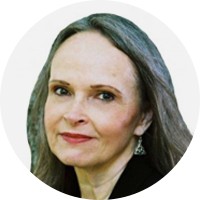The views expressed in our content reflect individual perspectives and do not represent the authoritative views of the Baha'i Faith.
O Son of Spirit! The best beloved of all things in My sight is Justice; turn not away therefrom if thou desirest Me, and neglect it not that I may confide in thee. By its aid thou shalt see with thine own eyes and not through the eyes of others, and shalt know of thine own knowledge and not through the knowledge of thy neighbor. — Baha’u’llah, The Hidden Words of Baha’u’llah, pp. 3-4.
Most of us feel we know a certain number of true things about ourselves and the world we live in—but what process do we utilize to hold one thing true and another false?
Imagine you are in a tour group viewing a frog at the Monterey Bay Aquarium “petting zoo”.
How do you know:
- The frog is green.
- The frog is moist.
- The frog chirps.
You can see that the frog is green, feel that it is moist, hear it chirp. In other words, you know these things through your senses. Since most of the people around us—including the kids—agree that these things are “true”—we may all agree that we know them.
But, how do you know:
- The frog is an amphibian.
- The frog hatches from an egg.
- The frog begins life with a tail and fins instead of limbs.
You can’t know these things merely by observing the frog. There might be an expert on hand to tell you these things. Indeed, any individual in the group (including you) may have studied frogs and understand that the frog is an amphibian that hatches from an egg looking more like a fish than a frog. But, whether other people in the group accept that as “knowledge” they can also hold with certitude depends on a number of things, including how much they trust your authority.
What if one or more members of the group doesn’t take your word that the frog has qualities that are not immediately apparent? They may call into question how you came to “know” these things about the frog. Did you see the eggs? Did you see them hatching? Did you observe the creature morph from one form to another? Maybe you did, or maybe you “know” these things about the frog because your teacher told you or you read them in a textbook or saw them on the Nature Channel.
Thus, how we acquire knowledge becomes a factor in the quality and completeness of that knowledge. We acquire knowledge about our world unconsciously every day. More frequently than we probably realize, we make unconscious decisions about the trustworthiness of a source of information. Prejudice and bias can play a role here, obviously. I may accept the authority of Einstein, for example, when he speaks about physics, but dismiss what he says about frogs, preferring to address my “frog queries” to a zoologist.
It is this territory—a place in which we can no longer see, touch or hear the object of our study directly—that disagreements arise about what is “true” and what we “know” or merely choose to believe.
William S. Hatcher, PhD, mathematician, philosopher, educator and Baha’i sums this up well:
It is when we try to go beyond the level of common-sense knowledge that we are forced to reflect more seriously about the process of discovering truth, for the unanimity which characterizes the world of practical truth is then rather quickly lost. We may, for example, start wondering about the inner and hidden structure of the things we observe—those forces and entities which we cannot observe directly but whose existence seems required to explain what we do observe. – The Science of Religion, p. 3 (emphasis added).
So, friends, here’s the big question: How do we determine reality?
At the heart of the Baha’i Faith is Baha’u’llah’s assertion that we must independently investigate reality, not relying on the opinions of others for our own knowledge. Certainly, there is a place for authority, but before we can use any authority as guidance, we need to subject it to some investigation.
How do we go about doing this? Hatcher has a suggestion:
In sum, we seek what science calls a theory, a consistent set of hypotheses involving abstract concepts which describes a model of reality and which allows us to deduce and thereby explain the known facts. In religious terms, we seek a faith, which is simply a theory to which we add a high degree of personal commitment and emotional investment. – Ibid.
Next: Science and Religion as Models of Reality
















Comments
Sign in or create an account
Continue with Googleor